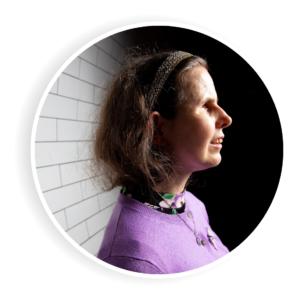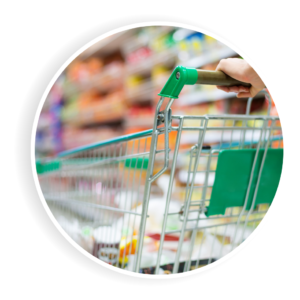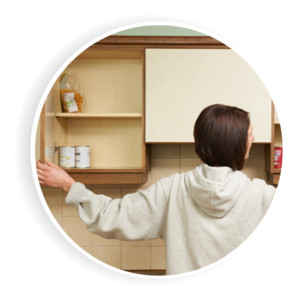Braille Labelling on Food Products – What Braille Users Have Told Us
Auriol Britton
 Not long before the call, Auriol was labelling the food that she had bought two days ago. Products that required labels were tea, alcohol, fruit, cocoa powder, and golden syrup.
Not long before the call, Auriol was labelling the food that she had bought two days ago. Products that required labels were tea, alcohol, fruit, cocoa powder, and golden syrup.
Auriol has been blind since 1982. To make her own braille labels, she buys address labels on a roll, which she puts into the brailler, then cuts them up, and sticks on the items.
Auriol is a carer for another person and cooks at least the main meal of the day for both. She can do most things around the house like cleaning, washing, ironing, hoovering, small bits of DIY like changing a lightbulb or batteries in a doorbell. She needs no professional assistance with those tasks. The only time when she needs to do extra work is when she has to label her food and medicine.
She stressed that it’s largely food packaging and dietary supplements that fail to deliver to braille users.
If people have allergies – like peanut allergies, for example – they’re risking a lot by grabbing a wrong product containing that ingredient off the shelf. There are severe consequences, not to mention moral issues, that might raise from a prolonged inaction by the government towards accessible food labelling.
“I don’t have a problem with including braille labelling into the cost of goods.”
At the same time, Auriol believes that the cost increase would be a manufacturers’ decision, for which they might attempt to blame braille labels.
However, those prices already depend on a variety of factors – from transportation of raw materials to the delivery of ready goods to the supermarkets.
“Will all the money that is being spent on branding and marketing, braille labels should be factored in, too. Lots of things influence prices, and braille would only be a small part of that.”
Charmaine Ashpole
Charmaine describes herself as a “novice” at learning Grade 1 Braille. She started her 8-week course last year, which enabled her to translate her voice into text.
She has worked on many access projects including “Heritage Access”. It looks at the access in cultural and theatrical establishments.
Charmaine is blind and partly deaf. It happened to her suddenly at the age of 45. She believes that she was “quite fortunate to be cushioned by her family”.
From her lived experience, learning how to read Braille is a long journey. It’s attributed to the fact that this is a sensory life skill that requires time and effort to get to the point where an individual can read Braille quickly and correctly, i.e., at similar rate as non-blind people are able to read and comprehend various texts around them in daily life.
Charmaine calls Braille a “lifeline” for partially sighted people who want to learn how to adapt to their condition.
“It adds value to have Braille on food labelling.”
In Charmaine’s case, her partner does their shopping for both.
When asked about a particular experience with shopping for food on her on, Charmaine replied that she simply can’t see the labelling past general outlines and colors.
“If I ever had to shop by myself, I would ask for assistance.”
Assistants are usually available in most supermarkets, but Charmaine notices that it can be very hard to locate the staff and get the attention that she needs.
“It’s a sighted world that we live in. Many people are terrified of blindness or are unaware of the obstacles that come with it.”
“The needs of partially and blind people are largely unseen, ironically,” she says. “We all need to eat and survive. I would argue that people need to try doing more than just survive.
“We need to be able to find the food that we want to eat, not just grab something off the shelf and then put it back [because there is no braille label]. Braille labelling would absolutely help with that.
“It’s also an acknowledgement from the producers and manufacturers that we are the customers that need catering, too.”
Harriet Smith
Harriet doesn’t tend to go grocery shopping on her own. She often needs a companion to assist her because most of the food packaging lacks braille labelling, making it impossible for her to browse shelves independently.
She stressed that medications like paracetamol and some shower gels have braille labels, but when it comes to food, there is a significant lack of braille labelling.
“If there was more braille labels on food packaging, it would certainly encourage me to shop independently and increase my confidence in doing so.”
Campaign Partners


